Create a list of articles to read later. You will be able to access your list from any article in Discover.
You don't have any saved articles.

The wings of chalcid wasps appear transparent, but when seen against a dark background they reveal intricate iridescent patterns - as seen here for Trigonoderus filatus
Scroll through our magnified specimen images and discover the miniature, ethereal world of chalcid wasps.
While beautiful to look at through a microscope, these tiny wasps are also killers of the most resourceful kind.
When we think of wasps we tend to imagine a yellow and black striped insect with a painful sting, but wasps are actually one of the most diverse groups of animals on earth.
Minute wasps called chalcids (pronounced 'kal-sids') are usually less than three millimetres long, smaller than a grain of rice. They come in a variety of glossy and metallic colours.
Less beautiful, however, is how they provide for their offspring. These parasitoid wasps lay their eggs inside other insects. When the eggs hatch, the wasp larvae devour the host insect alive, until they're ready to turn into adult wasps and leave. The host is doomed to die.
Their gruesome nature actually makes many chalcid wasps useful to us. As natural enemies of pest insects, hundreds of chalcid species have been used as biological control agents to protect crops and fight the spread of invasive species.
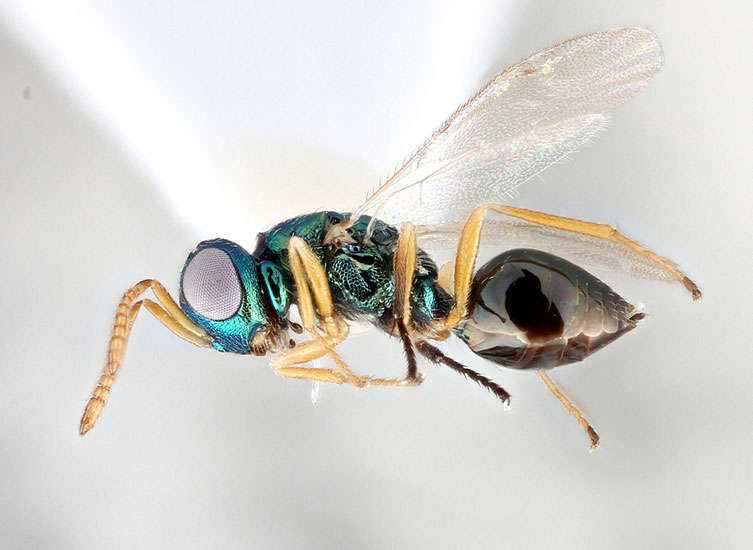
The beautiful iridescent Cyrtogaster vulgaris is reported to feign death when threatened by predators.
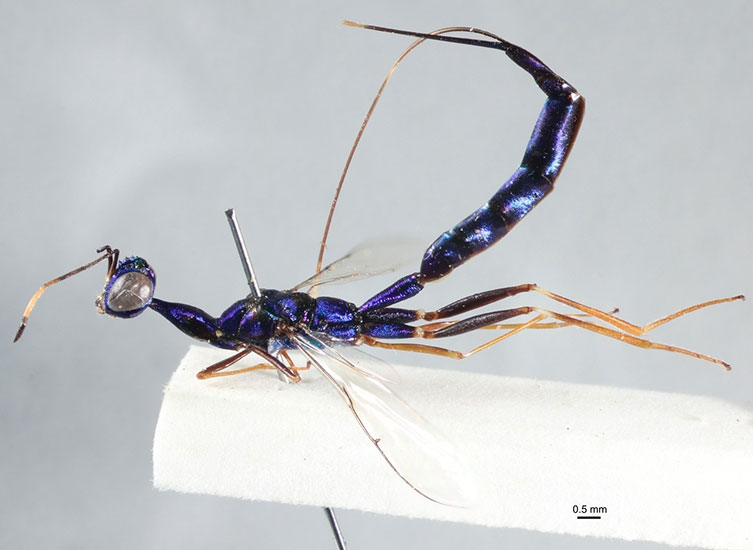
The glamorous blue Doddifoenus rex, from Papua New Guinea, is a giant among chalcids with a total body length of just over 25mm.
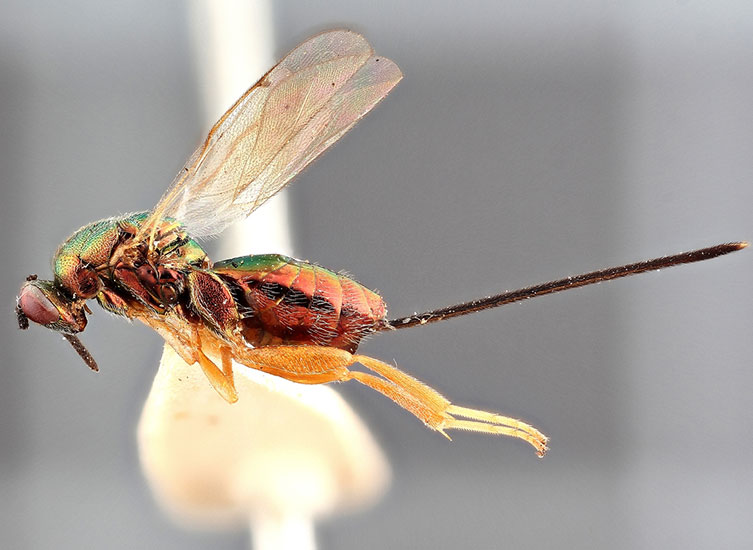
Chalcids (scientific name Chalcidoidea) are non-stinging wasps. The long, straight point at the end of the body is the female's egg-laying apparatus, called an ovipositor. This Torymus bedeguaris specimen was collected in the UK.
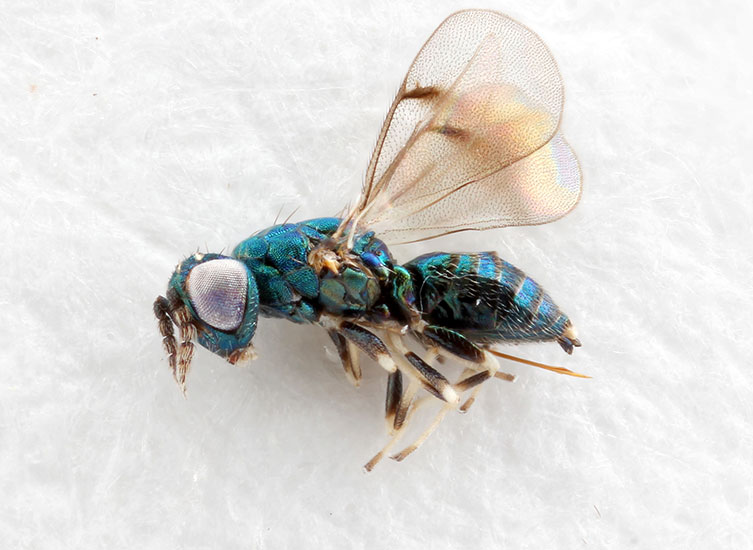
Neochrysocharis formosus is from the Eulophidae family of chalcids. As the most common parasitoids of destructive plant pests called leaf miners, Eulophidae are used extensively as an alternative to pesticides.
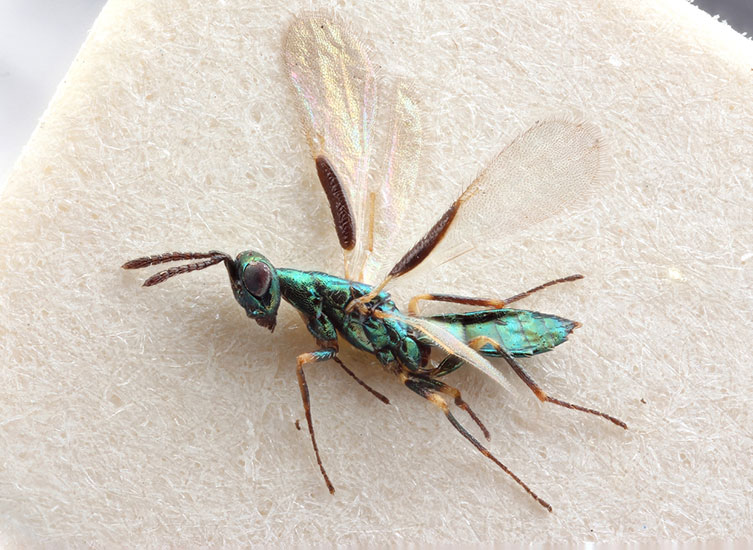
The large brown area on the wings of Platynocheilus cuprifrons, is an enlarged vein. Unique to this species, the feature only occurs in the males. Veins provides structural strength to the wings.
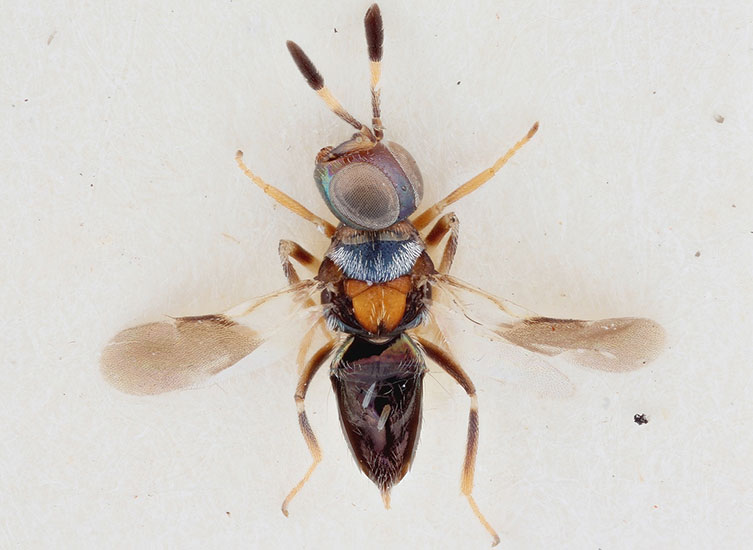
Cheilonerus paralia takes parasitising insects to another level, laying its eggs inside the larvae of other chalcids that are already developing inside a host insect - like a parasitic Russian nesting doll.
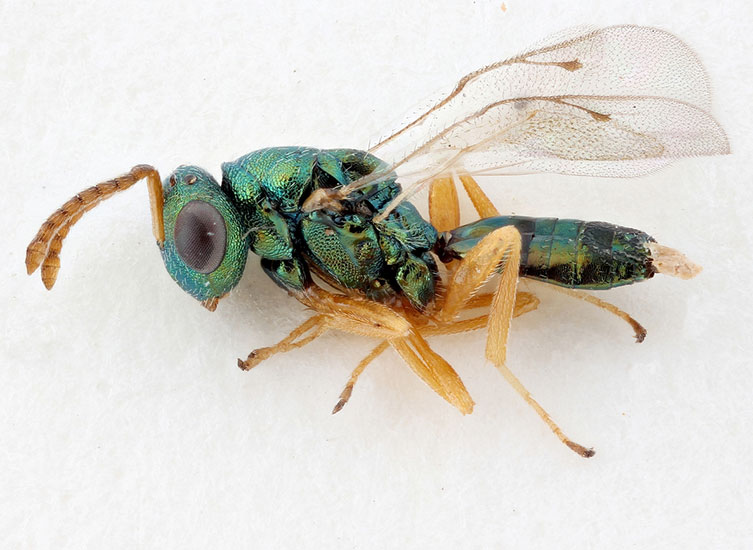
Pteromalus puparum is a gregarious parasitoid, laying many eggs into a single host. One female can deposit more than 200 eggs in one caterpillar pupa.

The antennae of some chalcids have evolved into showy appendages, such as for Chalcura volusus. This specimen was collected by Charles Darwin in Australia in 1836 while he was on the Beagle voyage.
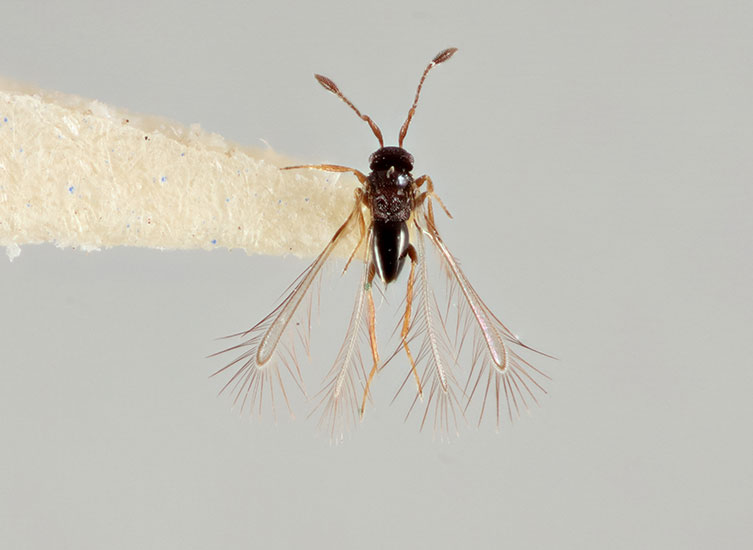
Members of the Mymaridae family of chalcids are commonly known as fairyflies. Some fairyflies, including Litus cynipseus, swim underwater to reach their aquatic host.
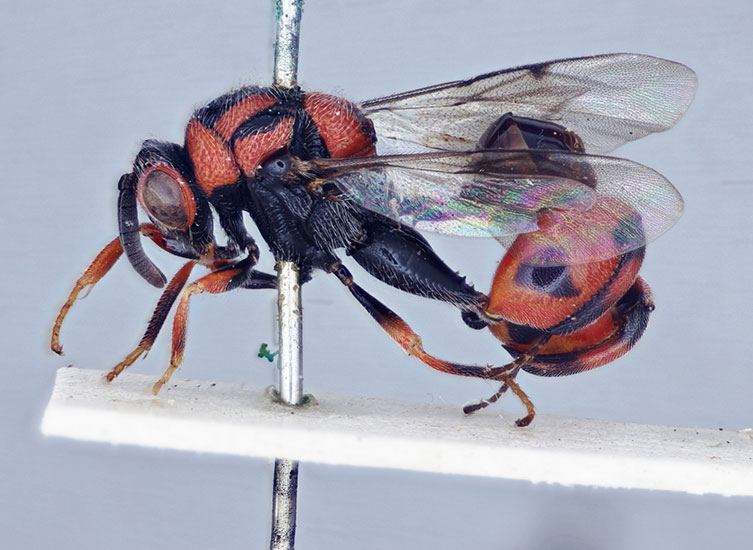
Conura nigrorufa belongs to the family Chalcididae, which have greatly swollen hind femora (the enlarged leg-part you can see in this image). Females of some species have been seen to use these to fight other females.
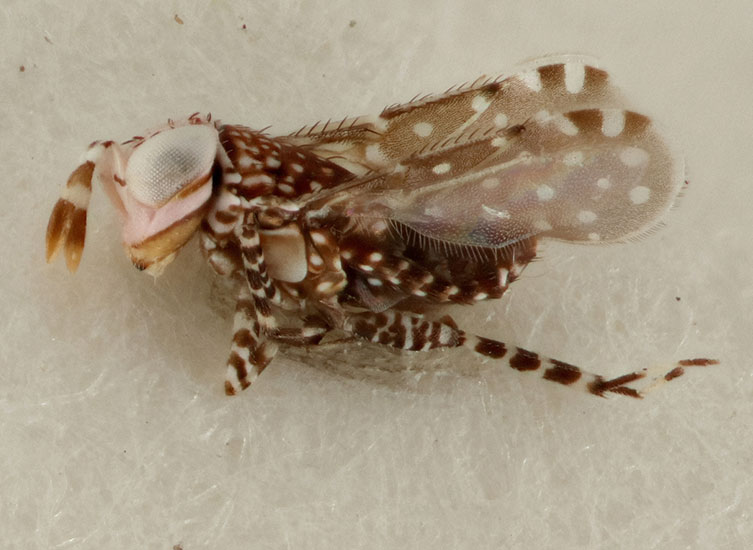
Marietta marchali is one of about 23,000 known species of chalcid wasp. However, their small size makes them difficult to find. Scientists estimate there are probably at least 500,000 species. Unlike true parasites, parasitoid wasps always kill their host and grow into adults that don't live off a host.
The Museum has imaged 100,000 slides of tiny insects from the collection, including 6,286 containing chalcid wasps.
For the crowdsourcing project Miniature Lives Magnified, we are seeking digital volunteers to help transcribe important specimen information on the accompanying labels, to help unlock vital data for future scientific research.

We need your help to record information from insect slide labels, such as where the specimen was collected. We provide a simple tutorial on what to look for.